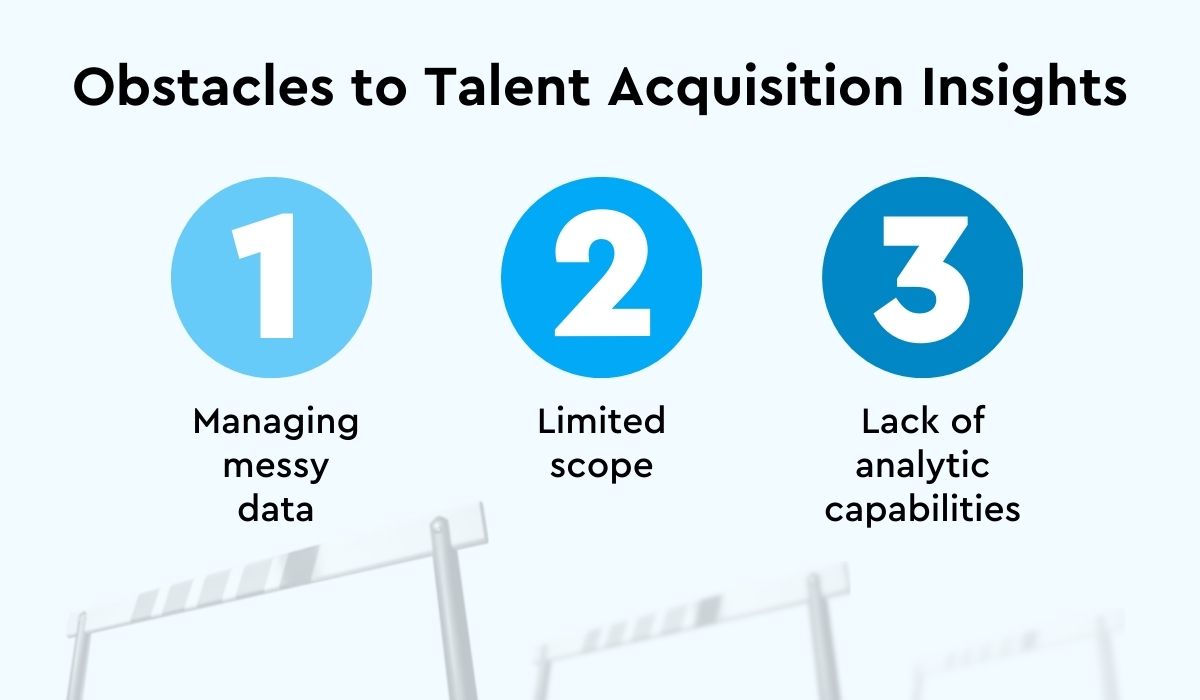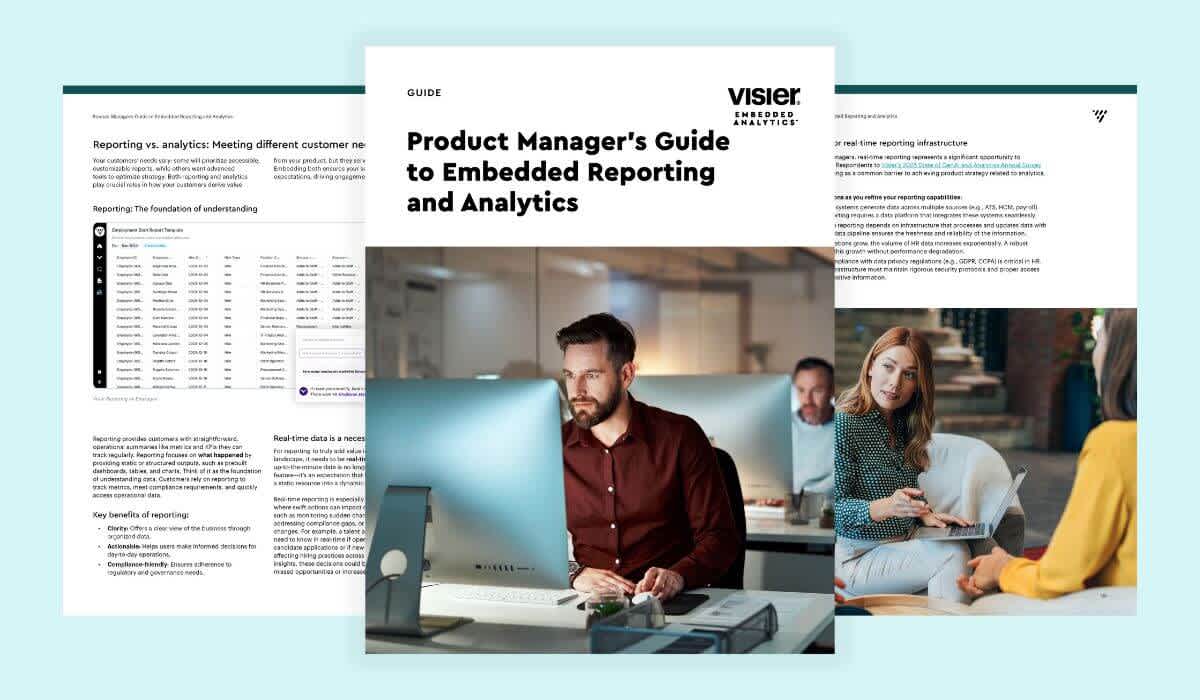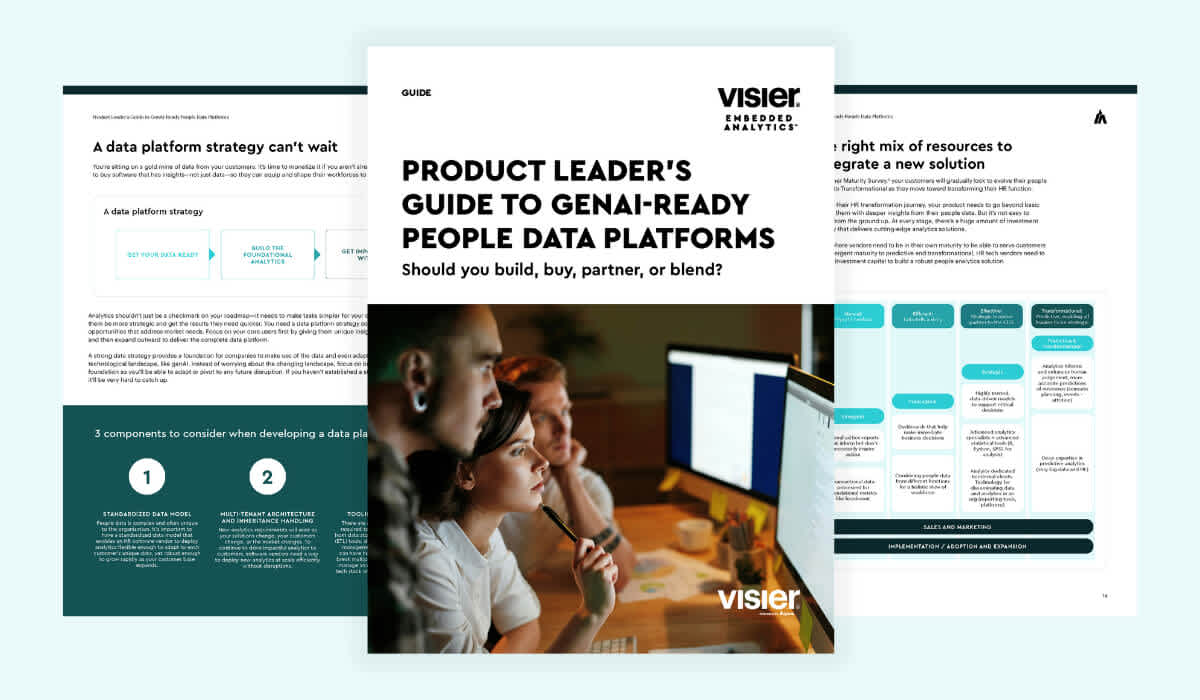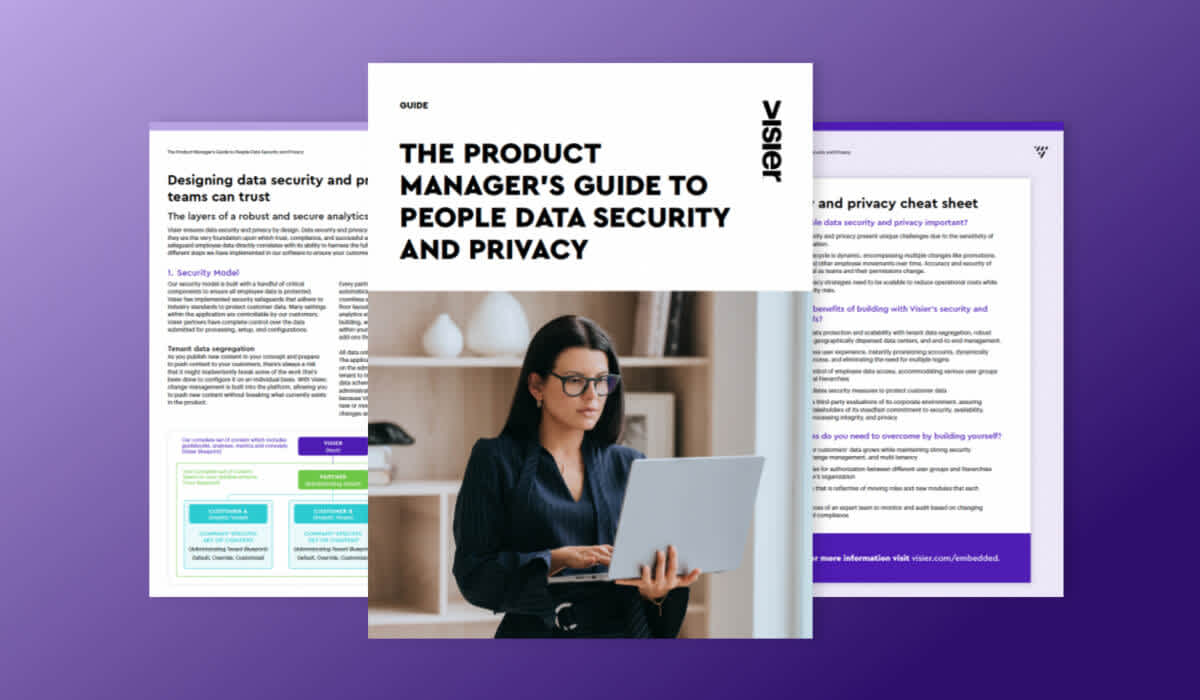3 Obstacles To Getting Effective Insights From Talent Acquisition Software
There are three primary obstacles to getting the right people insights from talent acquisition software. Find out what they are and how to overcome them.

A well-rounded talent acquisition (TA) strategy can transform an organization, and the right talent acquisition software can help hiring managers and recruitment teams streamline, optimize, and allocate resources efficiently. To bridge the gap between applicant tracking system (ATS) data and business results, talent acquisition software needs to manage complex data, integrate various data sources, and enable recruitment teams to show results.
There are three major obstacles to achieving these goals. Recruitment data is often messy and disorganized, competitors are quickly expanding their scope, and recruiting teams are under pressure to deliver results faster than ever.
By tackling these obstacles, talent acquisition software vendors can add value to their products, make the most of their data, and become the resource customers turn to again and again.
Read on to learn more about these three obstacles.

1. Recruitment data is messy
ATS software providers know better than anyone that recruitment data, while abundant, is often outdated, inaccurate, or unreliable. Whether the result of inconsistent values, like using slightly different names to describe the same role (e.g., VP of Marketing and Vice President of Marketing), or human errors like typos during data entry, messy data can greatly hinder effective analysis.
To make the most of recruitment data, it needs to be clean. This requires fixing or removing inaccurate, duplicate, incorrectly formatted, corrupted, or incomplete data, filling data gaps, and fixing structural or formatting discrepancies. Make sure to remove “zombie-state” applications—those that weren’t closed out even though the requisition has been completed.
Making sense of messy data helps your customers get more out of your product, makes it more versatile, and makes it easier to prove your ROI.
2. Competitors are expanding their scope
By connecting talent acquisition data to data outside of the ATS, you can give customers a more holistic view of their organization and its hiring and recruitment processes—and add value to your product. An employee’s experience after they are hired holds key information to improve talent acquisition strategies. Engagement, HCM, and skills data are some of the top areas of interest to your customers—and your competitors.
Combining engagement and HCM data with talent acquisition data lets customers design the role to attract the right person, use data-informed language to advertise the role, provide managers with necessary information to choose the right hire, and collect feedback to continue improving the process. Customers can also explore the intersection of this data to track quality of hire and improve recruitment practices by identifying the sources of high-performing talent.
Meanwhile, adding skills data lets customers track which skills are present in the organization, which skills are lacking, and which skills lead to the most successful hires and tailor job postings and interview processes accordingly.
Each new data source deepens the customer experience and, in turn, makes your product more indispensable to their talent acquisition strategies.
3. Recruitment teams need to show results
As organizations work to respond quickly to shifting economic conditions, recruitment teams are under incredible pressure to fill roles with the right candidates fast, and they need a talent acquisition software equipped with the right analytics to help them do it.
Recruitment teams want to dive deep into their data to understand where the blockers are that prevent requisitions from being filled efficiently. They need the ability to pivot fast, prove their ROI, and inform stakeholders of their results.
As they look to measure current results and track improvements, recruitment teams will be particularly interested in metrics like time to fill, new hire failure rate, applications per employee, and time to productivity.
The future of talent acquisition with generative AI
Generative AI (genAI) has massive implications for how people will get insights from their talent acquisition software. By eliminating the learning curve and making it easy for anyone to ask questions about their data and get answers in plain language, genAI can make your product stickier and more powerful.
As customers work to understand talent acquisition at their organizations, they can ask genAI questions like “How long will it take to hire a senior developer?”. They can even ask follow-up questions like “What talent sources provide the highest-performing senior developers?”.
GenAI can also help streamline the hiring process and free up HR professionals to focus on higher-impact, more strategic work. Leveraging generative AI in talent acquisition software has massive potential benefits for customers and brings revenue opportunities and a competitive advantage for vendors.
Choosing the right people data platform
Cleaning messy data, combining disparate data sources, and proving a clear ROI to customers is complex and time-consuming, and many vendors don’t have the budget and in-house talent to make it happen quickly. Choosing the right people data platform lets you leapfrog over years of development to revolutionize your talent acquisition software and meet customer demand now.
Alpine by Visier is the only platform that takes you from disparate and messy people data to actionable insights—in record time. It covers the entire HR analytics lifecycle—from unifying all of your application’s data to preparing it to deliver insights to customers.
You can ingest, process, store, enrich, and serve data in one unified platform, eliminating patchwork infrastructure and tech debt. With our future-proof platform, you can start small and scale fast, with unmatched capability, flexibility, and control—and no downtime. And the battle-tested, always-on platform already powers analytics for over 50,000 companies worldwide.
With a people data platform that does the heavy lifting for you, your customers can seamlessly use analytics at every stage of the employee journey to make smarter hiring decisions.

Embed people analytics into your app
To make sense of the changing world of work, businesses of all sizes need analytics. There are typically three paths software vendors can take based on their goals—read about them here.
Contextual analytics delivers answers directly in the platforms people already use, bringing data and insights into the ways they already work. Learn how to combine the power of contextual and embedded analytics here.
GenAI can be used throughout the employee lifecycle to increase productivity and support strategic workforce planning. Get the scoop.
Embedded analytics are analytics capabilities that are integrated within another application—and the value goes far beyond just convenience. Here's what you need to know.


